Lumber Riverkeeper fights to keep waterway safe and clean
Riverkeeper Jefferson Currie II first encountered the Lumber River as a child while visiting his mom’s family in Robeson County, North Carolina—crossing it while journeying, watching as it passed, twisting and turning its way from the edge of the Uwharrie mountains, through the sandhills, on its way through the coastal plain.
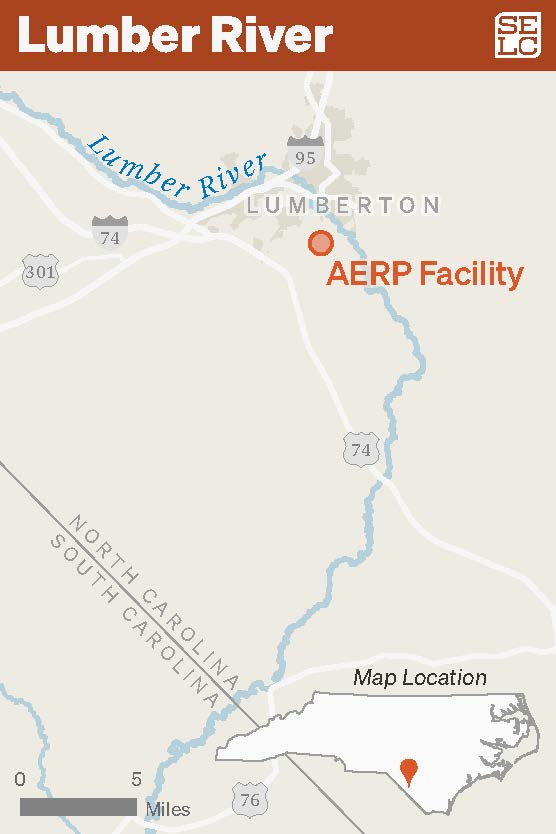
“So for me, growing up, that river always felt like home,” he says.
Now serving as Winyah Rivers Alliance’s Lumber Riverkeeper, Currie has partnered with SELC on a number of occasions, most recently in response to a new wood pellet producer building on a contaminated site along the river.
He reflects on the ways the river has changed over the years, and why environmental justice advocates are fighting to keep the waterway safe and clean for the community that still depends on it.
A LOOK BACK
An enrolled member of the Lumbee Tribe and a native North Carolinian, Currie attended the University of North Carolina, Pembroke—a school built in 1887 to educate Lumbee kids in Robeson County before becoming part of the University of North Carolina’s system during desegregation in 1954.
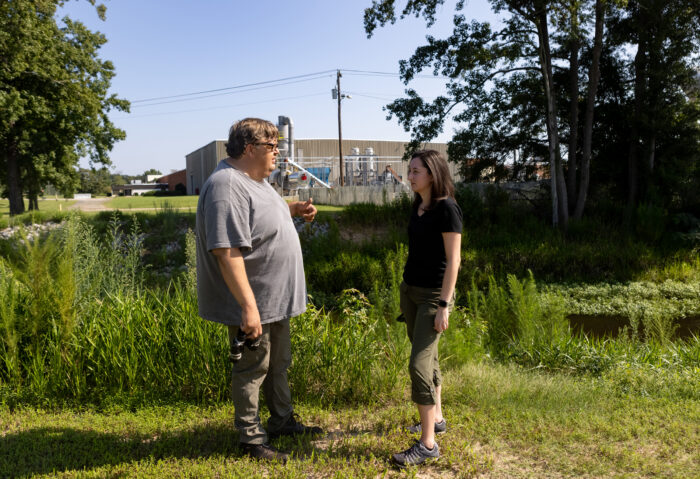
Now, Currie describes his alma mater in context with better-known HBCUs, or historically black colleges and universities: “This is that, for Indians,” he explains.
The state General Assembly has since designated UNC-Pembroke as North Carolina’s Historically American Indian University.
During college, along with local folks and some classmates, Currie says he would canoe, fish, and swim in the blackwaters of the Lumber River.
The Lumber River has a long and rich history. In the 19th century it was the transportation highway for the regional turpentining industry (turpentine has been used for hundreds of years as a water repellent, paint thinner, solvent, lamp oil, etc.). Currie says local trees chopped to distill into the highly-flammable product were rafted together and floated down the river.
“It was a working river then—it actually swirls underneath and flows a lot faster than people realize,” he says. “But it’s a living river, and a lot of people now use it for recreation.” And The City of Lumberton relies on the Lumber River for its drinking water, too.
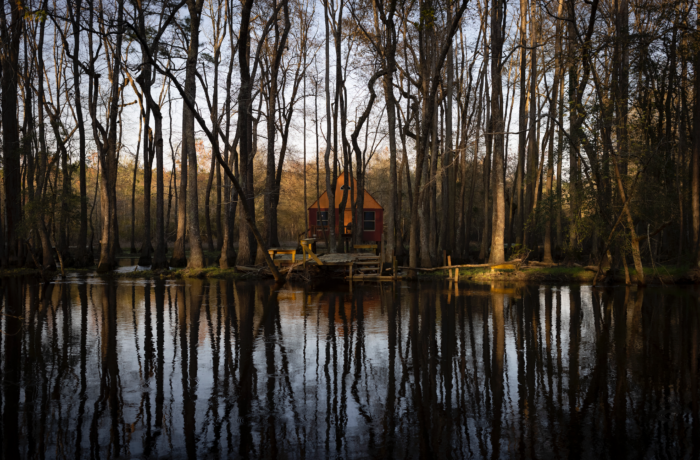
Its depth varies greatly, rising significantly during the rainy season and then sinking to levels so low during dry spells that canoers must get out and drag their boats across the sand bars and fallen trees.
When Hurricane Florence hit in August 2018, causing catastrophic damage in the Carolinas, Currie says the river swell “was just like nothing else. It was devastating. No one I’ve talked to has seen anything like it.”
Thirty inches of rain from Florence caused two quickly-moving crests to form in the Lumber. It brought 1000-year-flood levels “in areas where it has never flooded, or there’s no memory of them flooding,” says the riverkeeper.
And this is in a community where Hurricane Matthew brought intense rain and flooding just two years before. “People often live in floodplains in this watershed and don’t even realize it,” says Currie.
Tell the Biden administration to cut carbon not forests.
INDUSTRY IMPACTS
While flooding is a major concern for nearby communities, it’s certainly not the only environmental threat on their minds. There’s long been industry in the region, Currie says, including Duke Energy’s Weatherspoon Power Plant, where more than half a million tons of toxic coal ash were recently removed from an unlined ash pond basin. Textile plants have greatly contributed to pollution over the last 50 years, while industrial chicken and hog operations are now some of the primary, current contributors.
“Upstream is still pretty good, high quality water, as recognized by the state. But some of the middle parts near the industrial areas and concentrated animal feeding operations are suffering from pollution, and in recent years, there’s been an increase in these industries that do pollute more heavily,” he says.
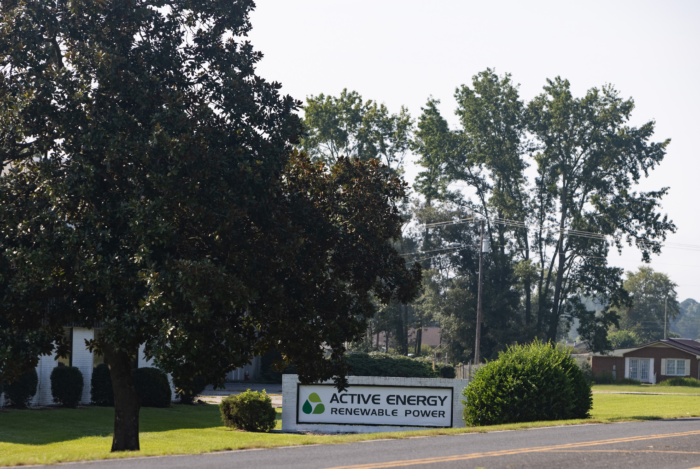
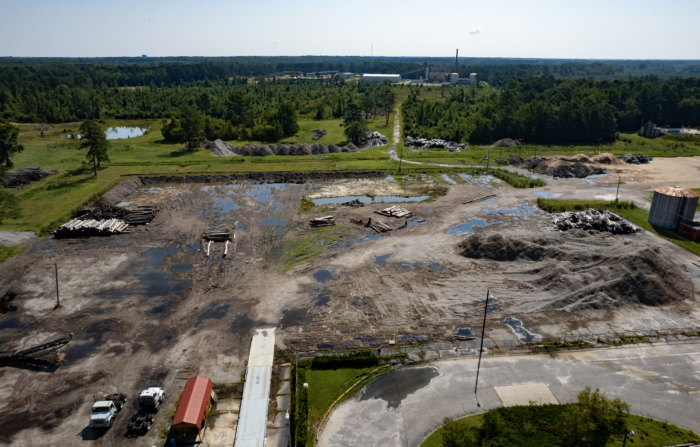
One of those industries is the wood pellet producer Active Energy Renewable Power, a subsidiary of British-owned Active Energy Group. Since purchasing the property, which is highly contaminated with toxic solvents from earlier uses, the company has run afoul of state environmental permitting requirements on multiple occasions.
Recently, the state Department of Environmental Quality ordered Active Energy to cease construction of the pellet mill due violations of the company’s air quality permit. Before that, for nine months, Active Energy discharged industrial stormwater pollution into the Lumber River without a permit. Only after being warned of potential legal action by SELC and Winyah Rivers Alliance did Active Energy obtain the appropriate permit.
Subsequently, SELC learned of additional unpermitted discharges and sued Active Energy for violating the Clean Water Act. In the March, 2021 lawsuit, filed on behalf of Winyah Rivers Alliance in the U.S. District Court for the Eastern District of North Carolina, SELC outlined concerns about ongoing illegal wastewater pollution discharges, including suspended solids, nitrogen, zinc, copper, and chromium, by subsidiaries Active Energy Renewable Power and Lumberton Energy Holdings.
It’s almost like we as people are disposable. We don’t really matter as long as they’re making the money they need to make.
Lumberton Resident Shalonda Regan
“This company is showing our community and our members how little it cares about the health and safety of the anglers, swimmers, boaters – everyone who lives in Lumberton and Robeson County,” Currie said at the time SELC filed the lawsuit.
Although Active Energy does not have the required permit for its ongoing industrial wastewater discharges or future discharges expected from the pellet mill, it still announced plans to start manufacturing wood pellets at the contaminated site in 2021, with future plans to expand and scale up production.
The new pellet mill would turn wood from our Southern forests into a coal-like substance called “black pellets,” or CoalSwitch, for export to overseas markets in Europe and Asia where it’ll be burned for energy.
Demand in other countries is creeping up for these pellets as politicians try to call pellet fuel carbon-neutral, despite studies showing it actually increases carbon pollution, contributing even more to climate change impacts.
“Active Energy has not disclosed to either regulators or nearby communities what pollution will be emitted into the air or water from its expanded facility,” says Heather Hillaker, the lead SELC attorney on the case. “Given the harmful toxins present on Active Energy’s property, pollution limits and frequent monitoring are crucial to protect the health of the Lumber River, people, and wildlife.
PATTERN REPEATS

Community members say the increase in polluting industries and disproportionate amount of pollution dumped onto their communities follows the pattern of the many other environmental justice cases that have and continue to play out across the nation—particularly in the South and communities of color.
“It’s almost like we as people are disposable,” says Shalonda Regan, who lives less than two miles from the Active Energy facility. “We don’t really matter as long as they’re making the money they need to make. The possibility of anyone being sick or affected in a negative way doesn’t amount to the money they’re making.”
Approximately 39 percent of the population in Robeson County is American Indian, and Currie’s Lumbee tribe is still largely concentrated there. Roughly 26 percent of the county population is white and 23 percent is Black or African American, according to the latest U.S. Census Data.
The national environmental justice movement began in 1982 with a protest over PCB-contaminated soil in a predominately Black community in nearby Warren County, North Carolina. Regan says learning more about her neighbors’ efforts is what put the pollution in her own community on her radar. That led her to help organize local grassroots groups like EcoRobeson and Hope Lumberton and join Winyah Rivers Alliance.
STAYING CURRENT
But the lack of transparency from polluters and general information available to the public is an increasing concern, she says.
“The way I explain it is, it’s almost like they placed these facilities or these things that can be a danger to the environment in places where they know it’s not going to be questioned because the information isn’t going to be distributed properly,” says Regan. “People don’t have enough information to form an opinion on it.”
A lot of locals get their news from church, “but then, when a lot of our churches closed due to the pandemic, even that teeny bit of information isn’t now being talked about. …I guess frustrating may be the only word to describe it,” she adds.
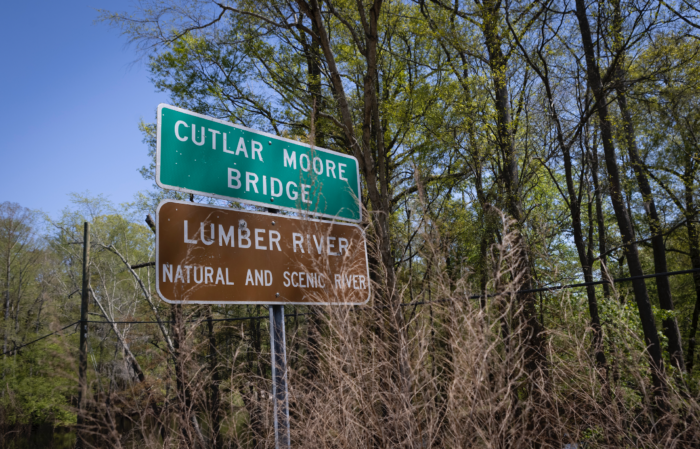
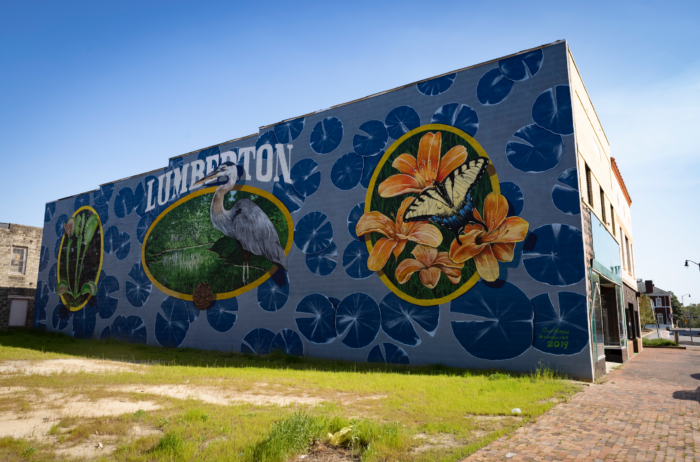
Even the local newspaper, previously published daily, is now only circulated five days a week online, and only twice in print.
Says Regan to her neighbors, “I don’t want to cause an uproar or an outrage, but your life is valuable, and you need to know what’s going on around you.”
But from studying history, we know that sometimes, when people are used to a certain type of treatment, they’re less likely to fight it.
“For some people living in the community, it almost feels like the same old same old,” says Currie.
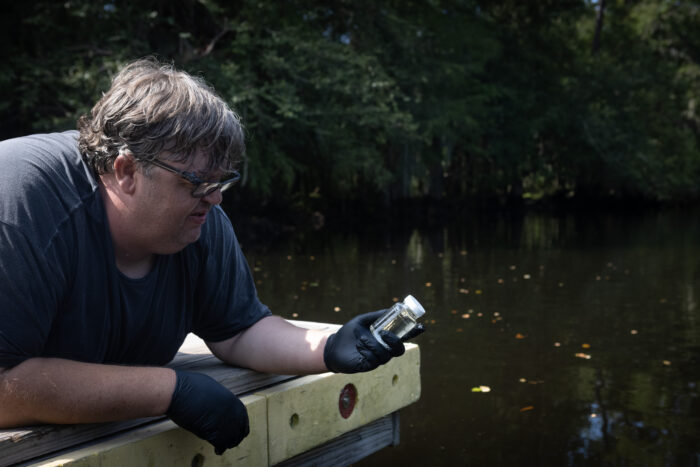
When he took over as Lumber Riverkeeper in 2018, Currie says he, “was hoping to do other things with the job,” like start a volunteer water quality program, do more outreach, and organize recreational activities. But he’s been spending most of his time monitoring and working with the community to fight against this increased pollution instead.
Says Currie, “It’s hard to spend a majority of your time worrying about air and water permits. I think it’s just a basic expectation that people want clean water, clean air, and good jobs like everybody else. Is that too much to ask?”
He invites everyone to visit the Lumber River, and says he wishes more people knew about the value it has to offer. The State of North Carolina recognized its value when it designated 115 miles of the Lumber River as a Natural and Scenic River and established the Lumber River State Park. The National Park Service concurred and included an 81-mile segment in the National Wild and Scenic Rivers System for its “outstandingly remarkable values.”
“Here, we are worth more than raising everybody’s chickens or being the dumping grounds for heavily polluting industries,” he says. “It’s a place of beauty where you can relax and get away.”
Currie, Regan, and SELC, among many others, intend to do everything in their power to keep it that way.
